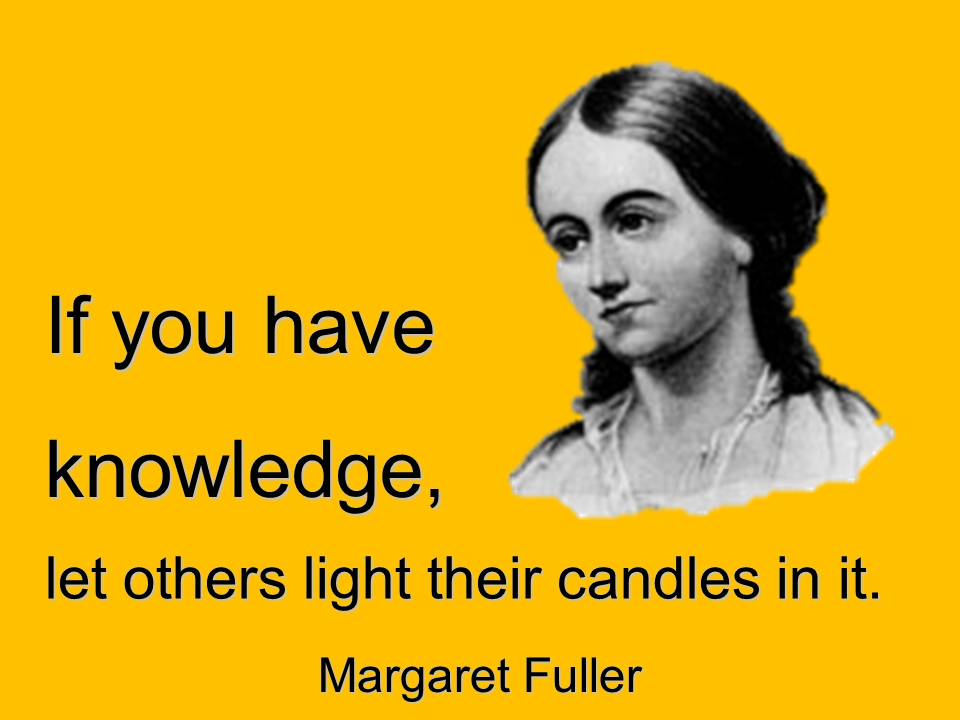 http://danassays.wordpress.com/encyclopedia-of-the-essay/fuller-margaret/
http://danassays.wordpress.com/encyclopedia-of-the-essay/fuller-margaret/
America’s first true feminist, Margaret Fuller holds a distinctive place in the cultural life of the American Renaissance. Transcendentalist, literary critic, editor, journalist, teacher, and political activist, ultimately turned revolutionary, she numbered among her close friends the intellectual prime movers of the day: Emerson, Thoreau, the Peabody sisters, the Alcotts, Horace Greeley, Carlyle, and Mazzini–all of whom regarded her with admiration and sometimes even awe.
After visiting Ralph Waldo Emerson in Concord, Margaret Fuller taught for Bronson Alcott in Boston from 1836 to 1837, and then at a school in Providence, Rhode Island. During this time she continued to enlarge both her intellectual accomplishments and personal acquaintances. Moving to Jamaica Plain, a suburb of Boston, in 1840, she conducted her famous “Conversations,” discussion groups that attracted many prominent people from all around Boston from 1840 to 1844.
Margaret Fuller also joined Ralph Waldo Emerson and others to found the Dial, a journal devoted to transcendentalist views in 1840. She became a contributor from the first issue and its editor. Her first book, based on a trip through the Midwest, was Summer on the Lakes (1844) and this led to an invitation by Horace Greeley to be literary critic at the New York Tribune that same year. She published her feminist classic, Woman in the Nineteenth Century, in 1845. In addition to writing a solid body of critical reviews and essays, she became active in various social reform movements. In 1846 she went to Europe as a foreign correspondent for the Tribune, and in England and France she was regarded as a serious intellectual and met many prominent people.

http://www.moonstoneartscenter.org/margaret-fuller-a-new-american-life/
Traveling to Italy in 1847, Margaret Fuller met Giovanni Angelo, the Marchese d’Ossoli, ten years younger and of liberal principles. They became lovers, had a son in 1848, and married the next year. Involved in the Roman revolution of 1848, Fuller and her husband fled to Florence in 1849. They sailed for the United States but the ship ran aground in a storm off Fire Island, New York, and their bodies were never found.

Leave a response